It looks like you're using an Ad Blocker.
Please white-list or disable AboveTopSecret.com in your ad-blocking tool.
Thank you.
Some features of ATS will be disabled while you continue to use an ad-blocker.
14
share:
Been quite a while since I made one of these constellation threads, so I thought I would put one out there. I have fun making them, hope some of
y'all have fun reading them.
Cassiopeia is a northern hemisphere constellation that looks like the letter "W" in the night sky:
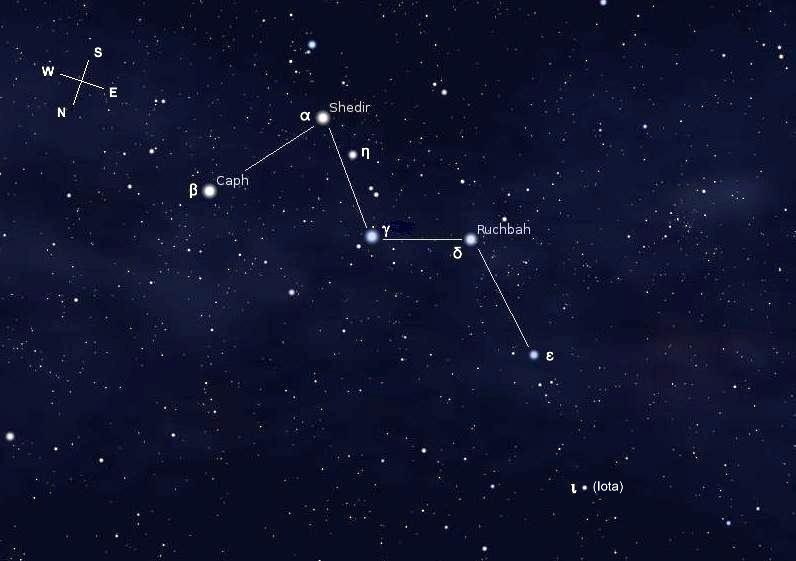
Or maybe it's a "M" ?
I guess it will depend upon your orientation of how you're looking up!
The constellation can be found by looking towards the north next to the constellation Cepheus. The distictive "W" or "M" pattern of stars will give it away:
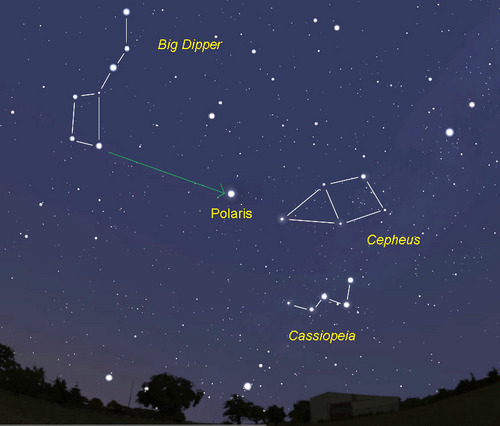
According to Greek Mythology, Cassiopeia was the wife of King Cepheus. She was arrogant and pretty much thought she was better than everyone else. Her arrogance cost her, and her punishment ended up being placed in the heavens as the stars that are the constellation we see today.
The four brightest stars to make up Cassiopeia are:
Alpha Cassiopeiae
Beta Cassiopeiae
Gamma Cassiopeiae
Delta Cassiopeiae
Alpha Cassiopeiae, also known as Schedar, has a visual magnitude of 2.24. It's about 228 lightyears away. It's a giant orange colored star that is about 42 times bigger than our own sun, and about 4 to 5 times our sun's mass. It is also cooler than our sun with a surface temp of about 4,530 Kelvins and it's about 1 to 2 hundred million years old. It's an old star as far as it's class goes (Giant Star) even though it's younger than our sun. Because of it's size, it shines about 676 times brighter than our sun.
This star is also featured in Pop Culture, in the 1997 film Contact it's mentioned that Cassiopeia A gives off a lot of radio signals.
Beta Cassiopeiae is a yellow-white subgiant star, with a visible magnitude of 2.27 and is also known as Caph. It's about 55 lightyears away from us, and is about 3.5 times bigger than our sun. It is almost 2 solar masses big and shines 27 times brighter than our sun. It is believed to be just over 1 billion years old.
Gamma Cassiopeiae is a large star which is 10 times the size of our sun and has 19 times the mass of our sun. It's HOT too at a temperature of 30,900 Kelvins. It's about 550 lightyears away from us and out shines our sun by a whopping 55,000 times! It also spins on it's axis so rapidly, it has a equatorial bulge, and throws matter off of itself which has formed a hot circumstellar disk of gas around it.
Delta Cassiopeiae, also known as Ksora, is actually a eclipsing binary system, meaning it's two stars that orbit each other every 759 days. They have a visual magnitude of 2.68 but will vary to 2.74 as the stars pass in front of each other. They are about 99 lightyears from us. The primary star is expanding into it's Giant Star phase and is about 3.9 times the size of our sun, with 2.5 times it's mass.
While not among the brightest, we can't forget Epsilon Cassiopeiae becuase it helps complete our "W" or "M". It is also known as Segin, and has a visual magnitude of 3.4. It is about 410 lightyears away from us and is a Giant Star. It is about 6 times bigger than our sun, with a mass of 9 times that of our sun. It shines about 2,500 times brighter than our sun does and is quite a bit hotter at 15,100 Kelvins.
Here's some interesting pop culture and trivial about the constellation:
The TV show The X-Files had an episode where an abductee uses her finger prints on a window to indicate where her alien abductors are from: Cassiopeia.
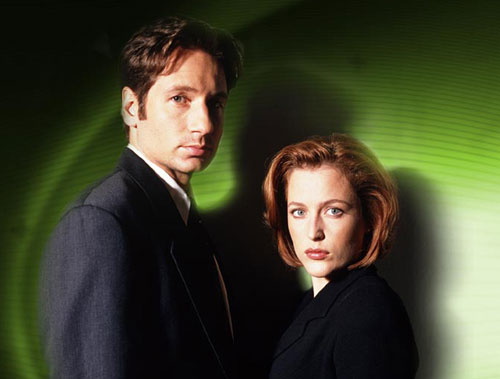
Sara Bareilles (one of my favorite singers) composed a song called Cassiopeia, and is actually about the stars in the system.
In the movie The Green Mile, John Coffey points up at the night sky at Cassiopeia calling the constellation the Lady in The Rocking Chair.

The USS Cassiopeia was a cargo ship in the US Navy during World War II. It was the only ship in the navy to bear this name.
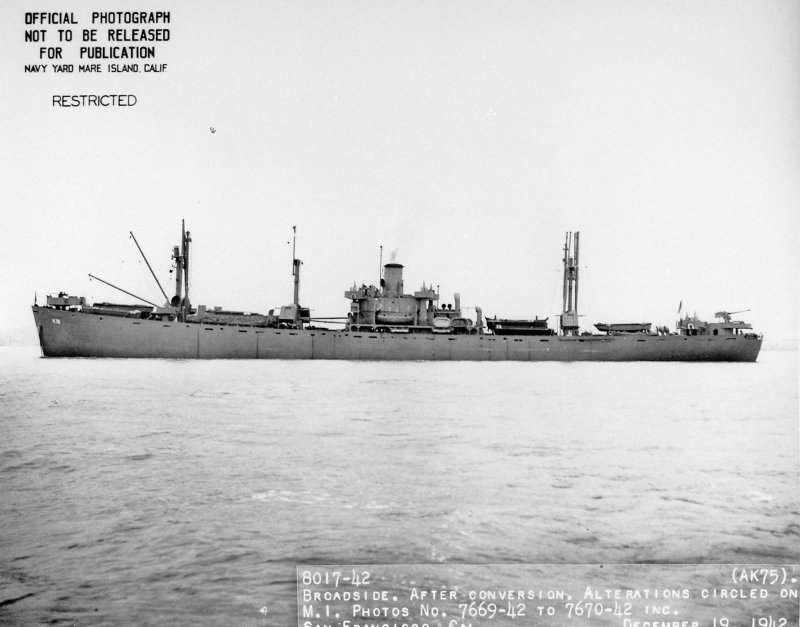
Cassiopeia is a northern hemisphere constellation that looks like the letter "W" in the night sky:

Or maybe it's a "M" ?
I guess it will depend upon your orientation of how you're looking up!
The constellation can be found by looking towards the north next to the constellation Cepheus. The distictive "W" or "M" pattern of stars will give it away:

According to Greek Mythology, Cassiopeia was the wife of King Cepheus. She was arrogant and pretty much thought she was better than everyone else. Her arrogance cost her, and her punishment ended up being placed in the heavens as the stars that are the constellation we see today.
The four brightest stars to make up Cassiopeia are:
Alpha Cassiopeiae
Beta Cassiopeiae
Gamma Cassiopeiae
Delta Cassiopeiae
Alpha Cassiopeiae, also known as Schedar, has a visual magnitude of 2.24. It's about 228 lightyears away. It's a giant orange colored star that is about 42 times bigger than our own sun, and about 4 to 5 times our sun's mass. It is also cooler than our sun with a surface temp of about 4,530 Kelvins and it's about 1 to 2 hundred million years old. It's an old star as far as it's class goes (Giant Star) even though it's younger than our sun. Because of it's size, it shines about 676 times brighter than our sun.
This star is also featured in Pop Culture, in the 1997 film Contact it's mentioned that Cassiopeia A gives off a lot of radio signals.
Beta Cassiopeiae is a yellow-white subgiant star, with a visible magnitude of 2.27 and is also known as Caph. It's about 55 lightyears away from us, and is about 3.5 times bigger than our sun. It is almost 2 solar masses big and shines 27 times brighter than our sun. It is believed to be just over 1 billion years old.
Gamma Cassiopeiae is a large star which is 10 times the size of our sun and has 19 times the mass of our sun. It's HOT too at a temperature of 30,900 Kelvins. It's about 550 lightyears away from us and out shines our sun by a whopping 55,000 times! It also spins on it's axis so rapidly, it has a equatorial bulge, and throws matter off of itself which has formed a hot circumstellar disk of gas around it.
Delta Cassiopeiae, also known as Ksora, is actually a eclipsing binary system, meaning it's two stars that orbit each other every 759 days. They have a visual magnitude of 2.68 but will vary to 2.74 as the stars pass in front of each other. They are about 99 lightyears from us. The primary star is expanding into it's Giant Star phase and is about 3.9 times the size of our sun, with 2.5 times it's mass.
While not among the brightest, we can't forget Epsilon Cassiopeiae becuase it helps complete our "W" or "M". It is also known as Segin, and has a visual magnitude of 3.4. It is about 410 lightyears away from us and is a Giant Star. It is about 6 times bigger than our sun, with a mass of 9 times that of our sun. It shines about 2,500 times brighter than our sun does and is quite a bit hotter at 15,100 Kelvins.
Here's some interesting pop culture and trivial about the constellation:
The TV show The X-Files had an episode where an abductee uses her finger prints on a window to indicate where her alien abductors are from: Cassiopeia.

Sara Bareilles (one of my favorite singers) composed a song called Cassiopeia, and is actually about the stars in the system.
In the movie The Green Mile, John Coffey points up at the night sky at Cassiopeia calling the constellation the Lady in The Rocking Chair.

The USS Cassiopeia was a cargo ship in the US Navy during World War II. It was the only ship in the navy to bear this name.

a reply to: eriktheawful
I have always been fascinated with that constellation. Well, not always, but at least since I took and an astronomy course my freshman year in college.
It was one of the first constellations I learned about. Then came Cassiopeia, another fascinating constellation.
They are two of the first constellations I taught my kids to be able to find after the big and little dipper.
I really hope this thread gets a lot of attention.
Star and Flag!
I have always been fascinated with that constellation. Well, not always, but at least since I took and an astronomy course my freshman year in college.
It was one of the first constellations I learned about. Then came Cassiopeia, another fascinating constellation.
They are two of the first constellations I taught my kids to be able to find after the big and little dipper.
I really hope this thread gets a lot of attention.
Star and Flag!
a reply to: eriktheawful
I like to use Cassiopeia to find the Andromeda Galaxy -- which could be seen with the naked eye on a dark night, and can be seen relatively well with a modest telescope or decent binoculars. If you use your naked eye, it's better to use the "look slightly away" method to see it.
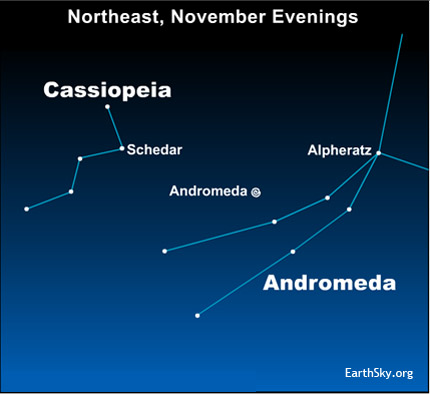
Source:
Use constellation Cassiopeia to find Andromeda galaxy
I like to use Cassiopeia to find the Andromeda Galaxy -- which could be seen with the naked eye on a dark night, and can be seen relatively well with a modest telescope or decent binoculars. If you use your naked eye, it's better to use the "look slightly away" method to see it.

Source:
Use constellation Cassiopeia to find Andromeda galaxy
a reply to: Soylent Green Is People
That's how I used to find it too in the past.
Andromeda, btw, in Greek mythology was Cassiopeia's daughter.
That's how I used to find it too in the past.
Andromeda, btw, in Greek mythology was Cassiopeia's daughter.
It was one of the first constellations I learned to recognise as a kid, because to me it looked like an "M" which is the first letter of my first
name.
To be more precise, just as with the Big Dipper, the "W" of Cassiopeia is an asterism, and the constellation itself contains a lot more stars.
In addition to using Cassiopeia to find the Andromeda galaxy, I also use it to find the Double Cluster in Perseus:
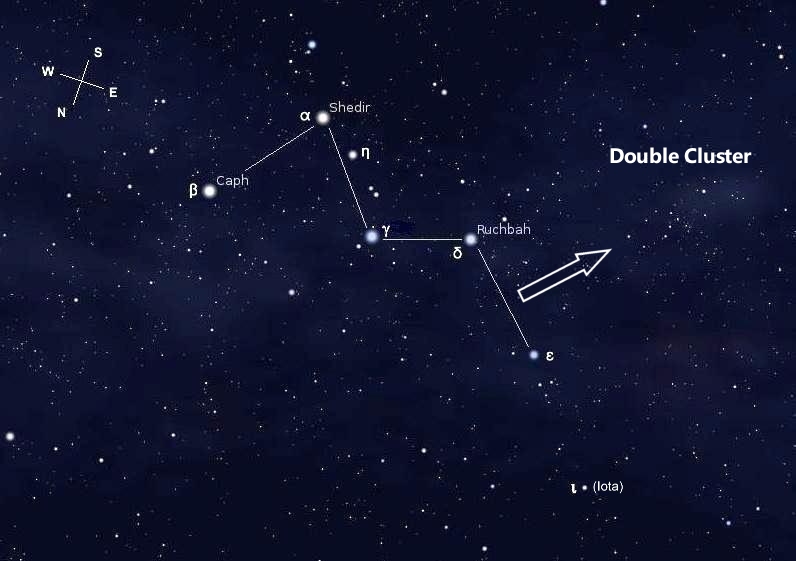
The Double Cluster looks beautiful in binoculars, and can even be seen with the naked eye from dark sky locations.
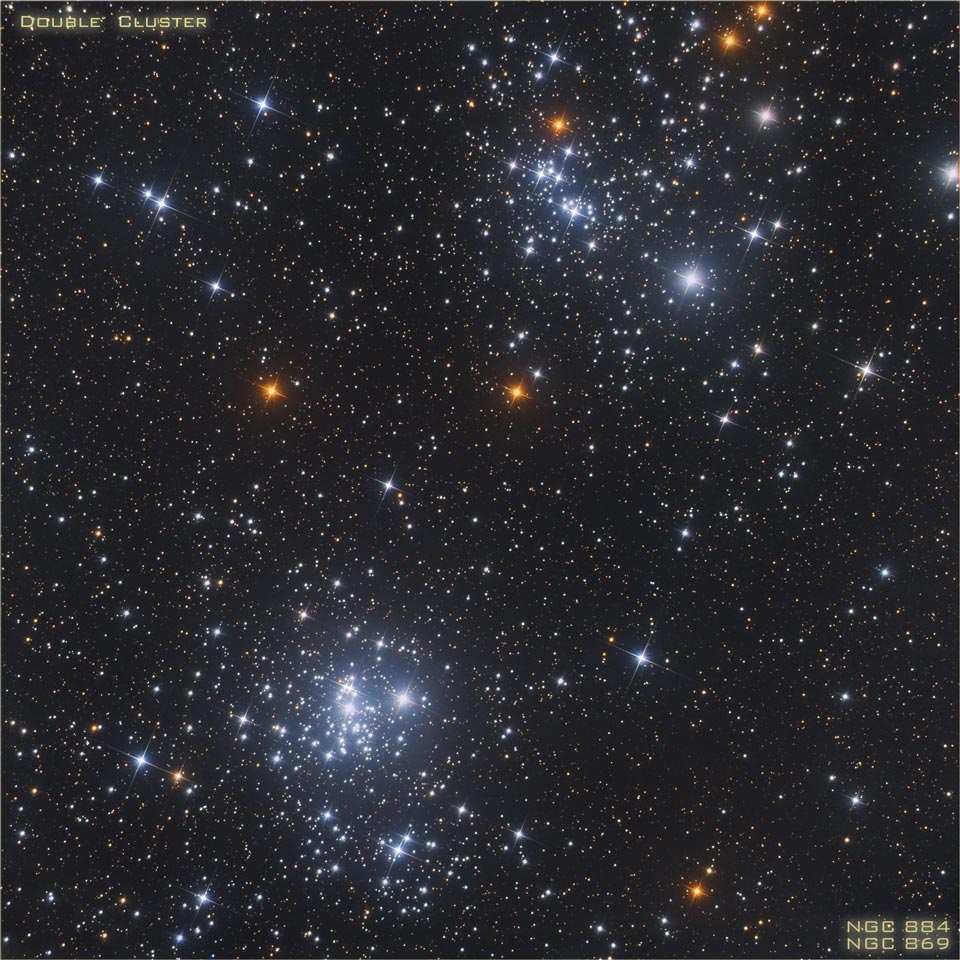
To be more precise, just as with the Big Dipper, the "W" of Cassiopeia is an asterism, and the constellation itself contains a lot more stars.
In addition to using Cassiopeia to find the Andromeda galaxy, I also use it to find the Double Cluster in Perseus:

The Double Cluster looks beautiful in binoculars, and can even be seen with the naked eye from dark sky locations.

Cassiopeia and the two dippers are my favorite constellations. They are so easy to identify, even in a hazy sky.
Cassiopeia was one of the very first constellations I remember looking at intensely as a little kid. I have a freckle pattern on my forearm that is
identical to the constellation, I always thought that was kind of cool. Cassiopeia has remained a favorite of mine to look at
Hi, star fans !
Guess wich constellation IS my #1 !
____#_____________________
____________________#_____
__________________________
__________________________
__________________________
__________________________
__________________________
_______________#__________
___________#______________
________#_________________
__________________________
__________________________
__________________________
__________________________
__________________________
____________________#_____
____#_____________________
And yes. . .after that it is the big dipper/bear/ursa major !
B-)))
Blue skies or. . . nice dark ones.
Guess wich constellation IS my #1 !
____#_____________________
____________________#_____
__________________________
__________________________
__________________________
__________________________
__________________________
_______________#__________
___________#______________
________#_________________
__________________________
__________________________
__________________________
__________________________
__________________________
____________________#_____
____#_____________________
And yes. . .after that it is the big dipper/bear/ursa major !
B-)))
Blue skies or. . . nice dark ones.
a reply to: C-JEAN
Orion.
And here you go, I made this one about Orion a year ago:
www.abovetopsecret.com...
Orion.
And here you go, I made this one about Orion a year ago:
www.abovetopsecret.com...
Greetings fellow Stargazers and some who want to de-calcify their Pineal Glands and Sun Gaze, Hello to You too... I started a web search re: Ayurveda
Astrology, there is a real good chance that the horoscope You read in the paper is WRONG!! Anyways because once You do a FREE Ayurvedic Astrology
readout they'll also provide a chart of the constellations that were present during Your "birth"..
Anyways I ran across this website www.stellarium.org and You punch in coordinates and it puts the Night sky right on Your computer... I checked tonight's television line-up and there is absolutely NOTHING on and no commercials..
enjoy.
namaste
Anyways I ran across this website www.stellarium.org and You punch in coordinates and it puts the Night sky right on Your computer... I checked tonight's television line-up and there is absolutely NOTHING on and no commercials..
enjoy.
namaste
A reply to: JimNasium
Hi.
You could check it there:
earthsky.org...
It is not in Orion, right?
Blue. . . or nice black skies for stars !
Hi.
You could check it there:
earthsky.org...
It is not in Orion, right?
Blue. . . or nice black skies for stars !
a reply to: eriktheawful
Hi eriktheawful!
Great info, thank you!
And...because this IS a conspiracy site, lol...here is a link to a site where you can read 'channellings' from the cassiopaeans...who claim that they are "us...from the future":
cassiopaea.org...
If you're interested! (I found it fascinating...I'm not a big fan of channelling, but couldn't stop reading this.)
jacygirl
Hi eriktheawful!
Great info, thank you!
And...because this IS a conspiracy site, lol...here is a link to a site where you can read 'channellings' from the cassiopaeans...who claim that they are "us...from the future":
cassiopaea.org...
If you're interested! (I found it fascinating...I'm not a big fan of channelling, but couldn't stop reading this.)
jacygirl
new topics
-
Imagine how it feels
US Political Madness: 3 seconds ago -
Do I post here or Cryptozoology.
Ancient & Lost Civilizations: 37 minutes ago -
Breakthrough treatment flips cancer cells back into normal cells
General Chit Chat: 1 hours ago -
New World Order Coming?
New World Order: 1 hours ago -
Short vs. Long?
General Chit Chat: 10 hours ago
top topics
-
Outgoing Lame Duck BIDEN Officials and Democrats Voice Their Regrets.
2024 Elections: 14 hours ago, 9 flags -
Reflections of Elections past
US Political Madness: 16 hours ago, 5 flags -
Short vs. Long?
General Chit Chat: 10 hours ago, 4 flags -
Breakthrough treatment flips cancer cells back into normal cells
General Chit Chat: 1 hours ago, 2 flags -
Do I post here or Cryptozoology.
Ancient & Lost Civilizations: 37 minutes ago, 2 flags -
New World Order Coming?
New World Order: 1 hours ago, 1 flags -
Imagine how it feels
US Political Madness: 3 seconds ago, 0 flags
active topics
-
Imagine how it feels
US Political Madness • 0 • : Flyingclaydisk -
-@TH3WH17ERABB17- -Q- ---TIME TO SHOW THE WORLD--- -Part- --44--
Dissecting Disinformation • 3849 • : DontTreadOnMe -
Do I post here or Cryptozoology.
Ancient & Lost Civilizations • 3 • : AdultMaleHumanUK -
Why Such An Uproar Over Non-US Citizens With H1-B Work Visas.
Social Issues and Civil Unrest • 93 • : some_stupid_name -
New World Order Coming?
New World Order • 13 • : SteamyAmerican -
Get Reday - Here comes the Bird Flu Pandemic - Millions are Notified
Diseases and Pandemics • 33 • : SteamyAmerican -
Christmas Car Near Detroit…
Automotive Discussion • 16 • : JJproductions -
Breakthrough treatment flips cancer cells back into normal cells
General Chit Chat • 2 • : SteamyAmerican -
President Carter has passed
Mainstream News • 21 • : CriticalStinker -
Instrumental Surf Music - Origins to the Present Day
Music • 250 • : underpass61
14
